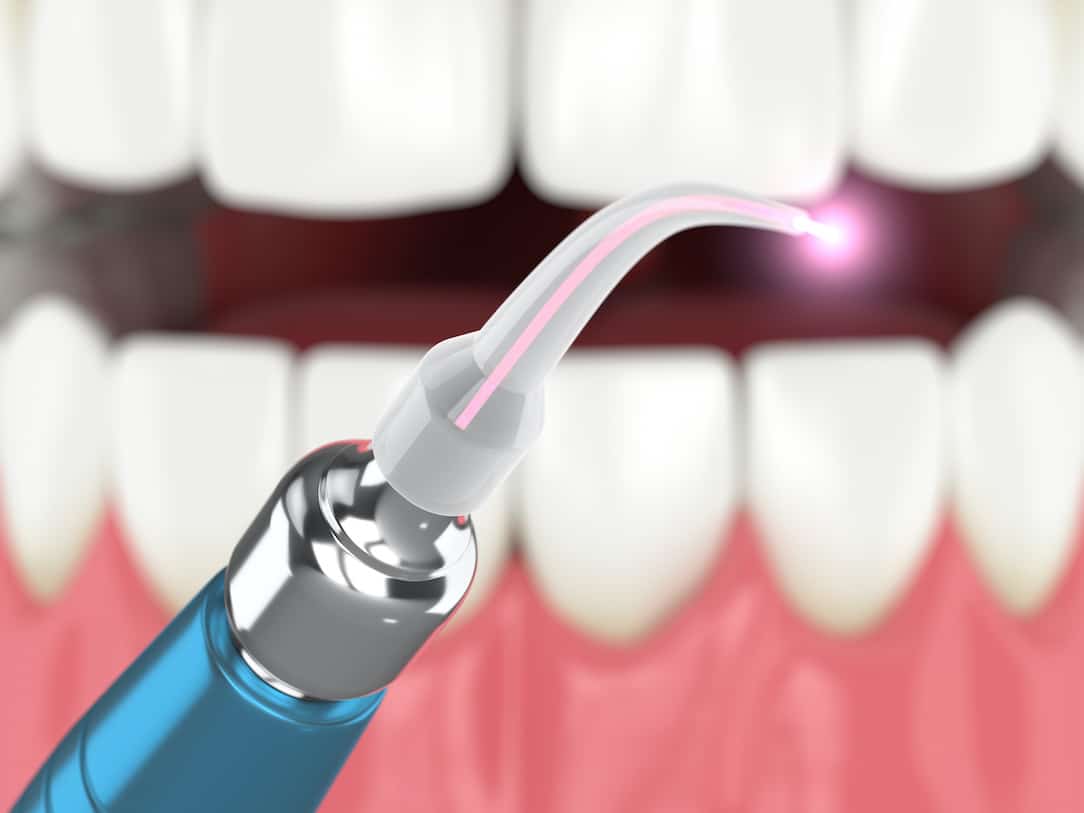
Benefits of Laser Dentistry:
- The number of stitches called sutures required is drastically reduced and becomes minimum.
- Anesthesia is a prerequisite for traditional dental treatments but in laser dentistry, the chances of giving the anesthesia are reduced or are not necessary.
- With the help of laser dentistry, we can sterilize the gums and make them immune to infection which results in less damage to the gums.
- Traditional dental treatments cause a lot of blood loss and which may have repercussions later, but laser dentistry is known for painless treatment and the blood loss is also significantly reduced.
What exactly happens in laser treatment of teeth
There are several types of dental problems, each of which necessitates a unique treatment technique and the use of a varied quantity of laser in operations. The laser’s intensity will vary depending on the process. Nonetheless, many dental treatments follow a similar scheduling procedure. The dentist will eventually decide whether or no anesthesia is required for the dental laser treatment, and even if it is, the quantity will be comparable to standard dental procedures.
People frequently choose laser treatment for teeth because the procedure is painless and the laser beams do not cause discomfort during the operation. Additionally, the amount of bleeding is reduced, and the recovery time is substantially less than with typical dental treatments.
Laser dental treatment cost in India
People often associate laser treatments with high costs, but Health & Smiles Dental Clinic offers laser treatments that are both inexpensive and affordable. The cost of laser treatment is comparable to that of standard dental treatments. Laser has numerous advantages over traditional treatments, including a reduction in the number of sessions required and a reduction in the amount of time required to complete the operation, allowing you to save both time and energy. Health & Smiles Dental Clinic will ensure that the cost of treatment will not be a barrier to getting the proper therapy at the right time for all of its patients.
The Future of Dental Lasers
Patients will be able to receive accurate treatments in a variety of medical domains because of ongoing laser research and development. Lasers (Light Amplification by Stimulated Emission of Radiation) are not a new phenomenon in medical science; they’ve been around for a long time. The most significant benefit of today’s research and development activity is that researchers are working to reduce costs through technological advancements. Science is now primarily concerned with resolving even minor medical difficulties.
There may come a time when dentists will be able to clean teeth, remove tartar, and address many other dental ailments fast using laser dentistry. Cleaning teeth is still a time-consuming operation in today’s world because it resembles surgery and is officially a surgical procedure. The drawback of this operation is that the surrounding tissues are exposed to lasers that are otherwise healthy, resulting in tissue damage.
With the use of growing technology and medical research, dentists should be able to treat any region of your tooth and perform a free dental drill procedure, eliminating the need for traditional dental procedures. This will help to address the anxiety factor of the people which is currently very high.
LASER IN DENTISTRY
LASER- Light Amplification by the Stimulated emission of Radiation.
Laser is used in dentistry to treat a number of dental problems. When used for surgical and dental procedures the laser acts as a cutting instrument or a vaporizer of tissue that if come in contact with.
In gum disease laser are used to reshape gums and remove bacteria during root canal procedures.
Laser can be used to remove a small piece of tissue (called biopsy) so that it can be examined for cancer.
The instrument creates light energy in very narrow and focused beam. This laser light produces a reaction when it hits tissue allowing it to remove or shape the tissue.
Laser integrated dental treatment-
2 main types of procedures used for laser dentistry.
- Hard tissue
- Soft tissue
- COMMON HARD TISSUE PROCEDURES–
- Cavity detection- Laser can defect cavities early by finding evidence of tooth decay.
- Tooth Prepartion & Dental Fillings – Local anesthesia & traditional drills are not often needed. Laser can kill bacteria in cavity.
- Treating tooth sensitivity- Teeth that sensitive to hot and cold can be treated with dental lasers that seal tubules on the tooth root.
- COMMON SOFT TISSSUE PROCEDURES–
- Treating a gummy smile- Laser are used to reshape gum tissue associated with gummy smile.
- Crown lengthening- Reshape both gum tissue and bone for healthier tooth structure which help with placing restorations on teeth.
- Treating tongue frenulum attachment- Those with thick or tight frenulum (the fold of skin under the front part of tongue that anchors to the mouth floor) may benefit from laser frenectomy. This treatment helps children whose restricted frenulum causes them to be tongue-tied have difficulty breast feeding or have a speech impediment.
- Removing soft tissue holds – Lasers can remove soft tissue folds from ill fitting dentures without pain or suture .
Other Laser Procedures
- Removing benign tumors
- Treating obstructive sleep apnea
- TMJ treatment
- Nerve Regeneration
- Treating cold sores

